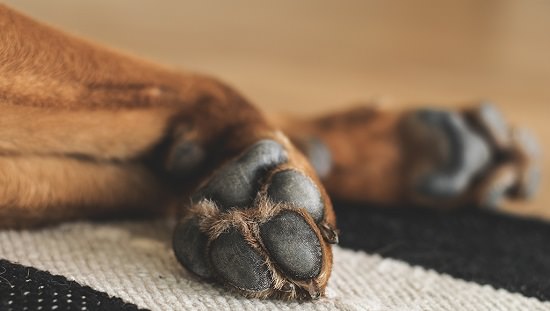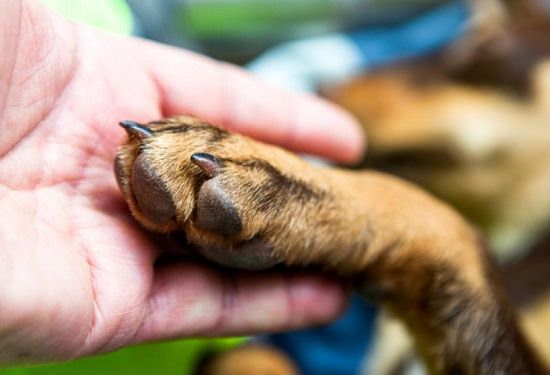Have you encountered a blister on your dog’s paw recently? Check out this article to know more about the condition.

Your pet dog’s paws have thick pads on the underside, which help to cushion and protect your dog’s paw when it walks or runs. These pads are subject to a lot of pressure when your dog stands, runs, or walks. Sometimes blisters may appear either on the pads or between the digits. A blister looks like a raised thin flap of skin on the pad, the upper layers of skin lifting away from the deeper layers, and fluid fills the space between the two layers. The blister could also be broken, leaving a red, ulcerated patch. Below are some of the symptoms and causes of blisters on dog’s paw.
Symptoms and Causes
If your dog’s paw is bleeding, he is limping, avoiding putting weight on the paw while walking, licking, or chewing the paw, then there might be a chance of a blister.
When you walk him on hot concrete sidewalks, roads, or hot sand, your pet’s paw could suffer burns and blisters. Walking him on deiced roads that chemical salts have cleared can lead to a blister as well. Rough, jagged rocky surfaces can also cause blisters on your dog’s paws.
Blisters can also form repeated friction, bacterial infection, skin disease, and autoimmune diseases like pemphigus. Foreign bodies like small pebbles, glass embedded in the paws can cause infected blisters between the digits when your dog walks on rough surfaces.
Blister on Dog’s Paw Remedies
In case a blister occurs on your dog’s paw, avoid taking your walk for outdoor walking or running activities. Let your pet have rest and so, avoid putting weight on his feet. Feed your pet a good diet and use supplements to boost tissue repair.
Whenever a blister occurs, avoid bursting it as it can further lead to other complications. Follow this easy home remedy to hasten the healing process of the blister:
Clean the paw with freshwater or an anti-bacterial wash and draw the paw with a soft towel. Now, apply a considerable amount of Neosporin on the blister and cover the area with a cotton bandage. Change the dressing twice a day until you see the condition get better. If your dog suffers from extreme pain, you may give a non-steroidal medication as prescribed by your vet.
When to see your vet?
If the blister is very severe and is accompanied by an odor or discharge, then visit your vet immediately. If you notice blisters on other parts of the dog’s body, it could be the symptom of an autoimmune disease. In such a case, your vet may prescribe certain Immunosuppressants like steroids, etc. If the blister is infected, your vet may prescribe antibiotics or anti-inflammatories, or topical ointments.
Preventive Measures

- Start walking your pet right when he is a puppy, gradually increasing walk time to allow calluses to form on his paw pads which will protect his paws.
- After the blister heals, make him walk on soft surfaces or grass, apply paw cream to hydrate and protect his paw pads or protect his paws with booties.
- Check regularly between toes and paw pads and keep them clean of dirt, mud, and other foreign bodies.
- Groom often to keep your dog’s paws healthy.
- Apply Vaseline on clean paw pads before taking out for a walk.
How to Comfort your Dog
Keep him comfortable, rested on a soft bed or blanket, treat him to his favorite foods and toys, talk to him kindly and spend time with him. Give him extra love and attention. Get him pain relief medication to ease the pain. Care and attention, along with the right treatment, will go a long way in healing your pet.
